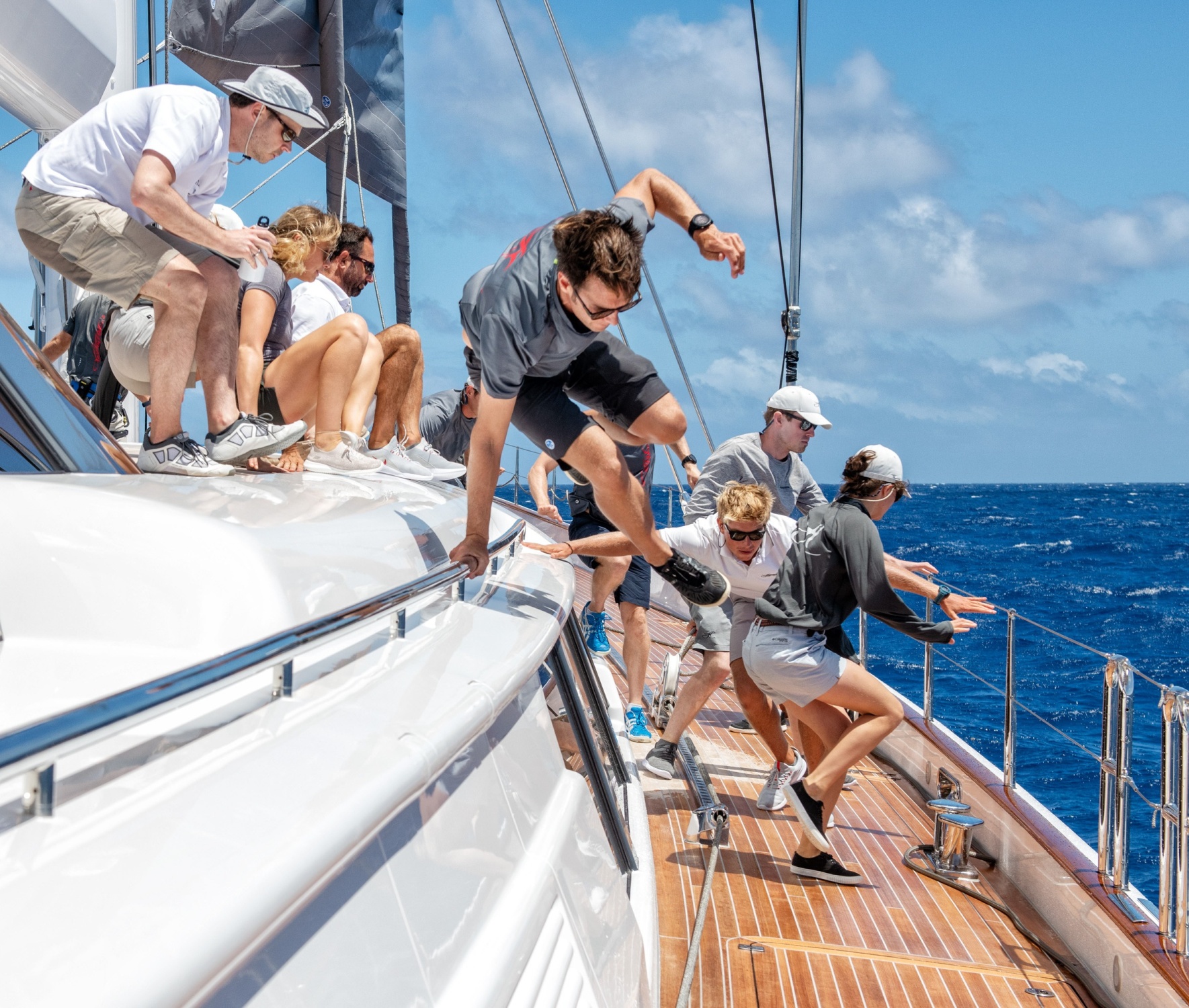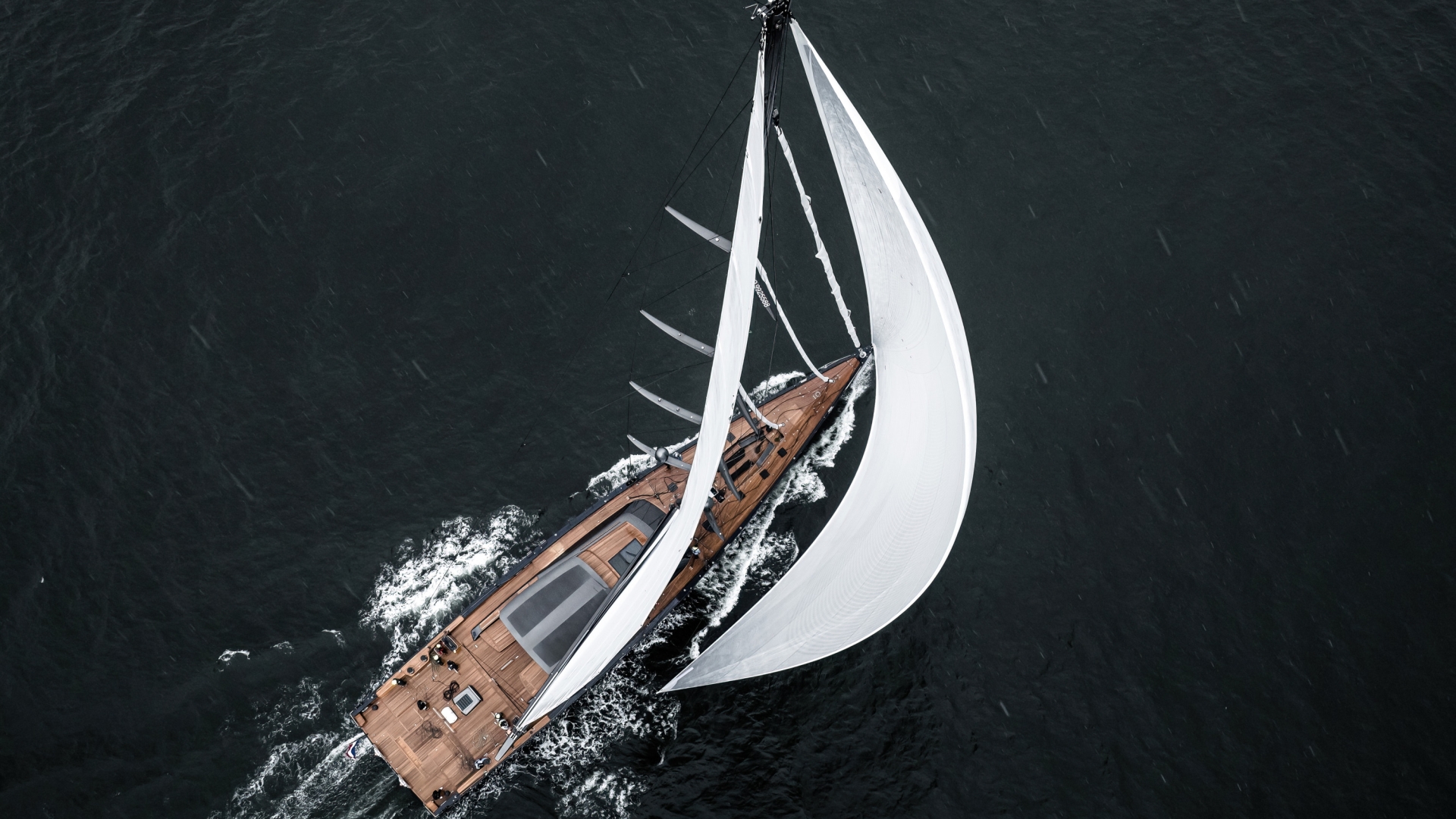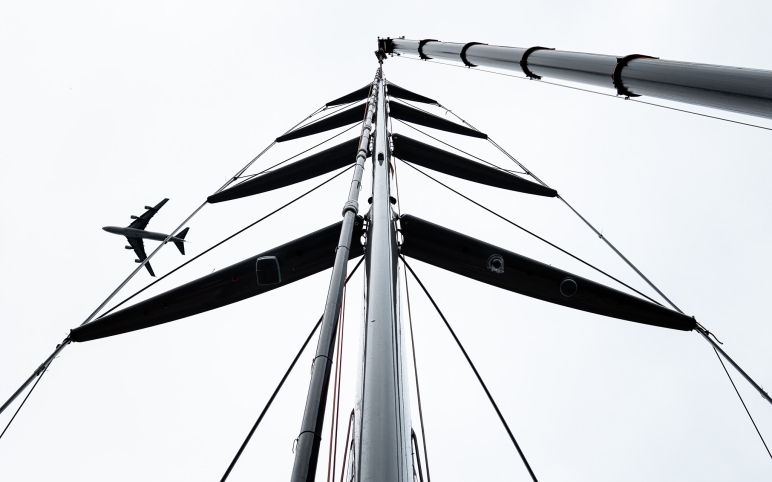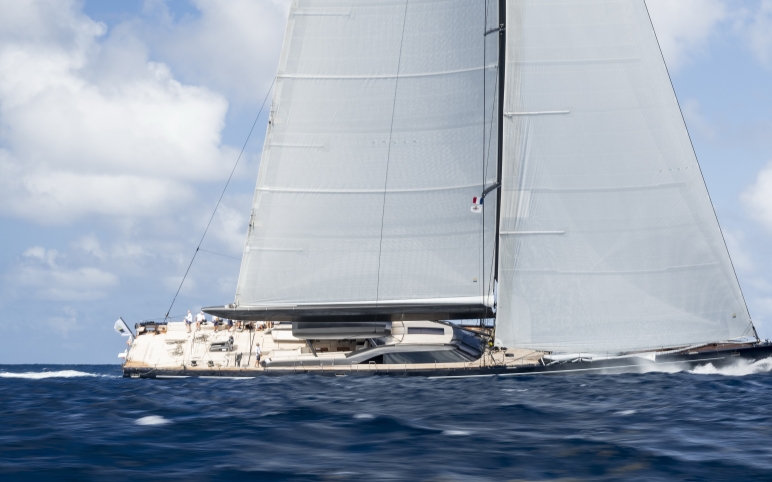ABSOLUTE
WEIGHT REDUCTION
The carbon fiber expertise of Rondal was integral to the construction of the yacht itself. Weight reduction for the 46.82m sloop designed by Reichel / Pugh and Nauta Yacht Design began with a collaborative effort between the engineering teams at Royal Huisman and Rondal. To meet strict weight targets, the builder relied on Rondal for the following carbon fiber gear:
- Keel trunk
- The recessed tender well on the foredeck
- Crew companionway entrance
- Steering pedestals
- The 17.5 meter-long carbon composite coachroof
- Guest cockpit structure
- Watertight bulkhead
- Bimini
Rondal’s role in project 405 Nilaya shifted from product supplier to system integrator according to one of the project managers. By working with the builder and naval architects through the design and build process, it was determined where carbon composites could be used to maximize the advantage of stiffness and weight savings.
When it came to the primary propulsion for this Panamax speedster, Rondal’s team worked closely with the naval architects on the sail plan and rig loading and with sailmaker Doyle Sails on the specifics of managing Doyle’s new structured luff sails. Nilaya’s blade jib, for example has no headstay lock but uses lashings instead, a switch that saved 100kg.
The towering mast is tapered in two directions at the top, a small refinement that saved 50kg, but weight saved in a very significant place. To take advantage of the very narrow headsail sheeting angles, Rondal created a radical new curved carbon fiber spreader. These handsome spreaders also allow more J2 area. For the mainsail, a unique and simple hook replaces moving parts to lock the main’s headboard onto the halyard car. At the opposite end of the spar, rethinking the mast base and integrating the halyard turning blocks and their jammers into the mast collar lightened and simplified the deck construction.
Another first was placing traditional running backstays with locks – this by owner request. The arrangement saves 1,200kg over the typical arrangement utilizing captive winches below deck and 3-4 cubic meters of volume in the lazarette.
Perhaps the biggest leap forward was the development of new hybrid carbon/aluminum captive winches that are half the weight of the conventional all-metal captive winch. These hybrids utilize an economical aluminum bracket and housing but a carbon drum. The new drum construction allows the diameter to be trimmed from 600mm to 450mm the weight dropping simultaneously from 890kg to 430kg for an 18 ton winch pulling at 60 meters per minute.
A number of these innovations are already finding themselves going into Royal Huisman’s next two builds, project 408 and 410, and the latter will have even larger Rondal captive winches.
The Royal Huisman project 405 Nilaya is a project we are very proud of. The project has challenged us in many ways. The sailtrials are in full swing and completion is fast approaching. We obviously wish the owners of Nilaya fair winds and following seas.




.jpg&resolution=772x482&quality=100)

